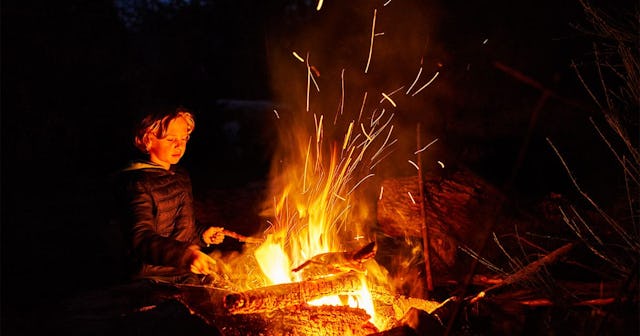Don't Forget About The Risk Of Burn Injury This Holiday Weekend

In early June, my small town announced it was canceling the annual Fourth of July carnival and fireworks show to help stop the spread of COVID-19. A town-wide event that attracted hundreds of people was irresponsible, and the decision was rational and necessary, but, frankly, also sad. The cancellation was a sign that the summer of 2020 would look very different than any summer that had come before. Different, but not down and out for the count.
This summer will mean less carnivals and more backyard bonfires, less explosive firework displays and more driveway sparklers, less funnel cakes and more barbecues at the grill.
Which means we need to have a serious conversation about one of the leading causes of morbidity and mortality in children: burn injuries.
I know…I know… Between the deadly virus with the mysterious inflammatory illness and the usual concerns regarding water safety, the last thing we need is another thing to worry about. But, better safe than sorry. And as it turns out, most parents are not prepared in the case of burn injuries. According to a poll conducted by Ipsos, a multinational independent market research firm, many parents are unprepared to respond in a burn emergency, and most harbor misconceptions about fire dangers and their risk for injury.
Scary Mommy spoke with Dr. Kevin Foster, director of Burn Services for the Arizona Burn Center at Valleywise Health, to get a better understanding of the risks of these summer activities and how best to keep ourselves and our kids safe over the holiday weekend.
Wangwukong/Getty
“Burns are one of the leading causes of injury-related death in children, so the lack of knowledge that Americans demonstrate around burn injuries is concerning,” said Dr. Foster. “People need to be aware of the dangers, even with something as common as grilling, so that they are prepared to react appropriately and safely in an emergency.”
According to Dr. Foster, a burn is a burn, and as such, whether it’s caused by a hot liquid, a flame, a chemical, or contact with something hot, a burn tends to follow a common pathway. What happens to the skin and to the patient tends to be the same regardless of how the burn happened.
The best way to treat a burn is to first prevent it from happening. This requires vigilance and prevention measures. Keep children at least three feet away from grills. Don’t let children run or play near bonfires, and when it comes to fireworks—just don’t. Even those seemingly innocent sparklers can be dangerous. But if you must use fireworks, if fireworks are an indispensable part of your backyard Fourth of July celebration, follow all instructions and ensure only adults are handling them.
Even when we’re at our most vigilant, accidents happen. And when they do, it’s important to be prepared. First, stop the burning—separate the skin and the heat. Second, cover the burn with a clean, dry dressing, and do not put ice on the burn. Again—no ice! Close to half of adults surveyed believed burns should be treated with ice, and Dr. Foster notes that is absolutely not true. In the case of a burn, ice can actually make the injury worse by decreasing blood flow and directly damaging cells, making the burn deeper, causing more cells to die, and making it more likely that the burn injury will require surgery. Running the burn under room temperature or cool water can be a good option, which provides some relief from the pain. Finally, assess the burn and determine whether it can be treated at home (with antibiotic ointment) or whether you should seek medical attention.
PhotoAlto/Odilon Dimier/Getty
To determine whether the burn requires medical attention, look at its size, location, and the condition of the skin. If the burn is larger than the palm of your hand, you should seek medical attention. If the skin is blistering or coming off, it means the burn is deep and requires medical attention at an emergency room or burn center. If the burn is on the face, hands, or feet, it’s probably also better cared for at the hospital, as those are areas in which you don’t want to lose function. And, if you’re unsure, it’s better to err on the side of caution and seek medical attention, where you can get information on how to treat the burn at home or be promptly admitted for treatment.
According to Dr. Foster, “The most important thing to do is to think about what you need to do ahead of time to make things safe, particularly when kids, and young kids, are around. Be vigilant and think about safety in addition to having a good time.”
There’s maybe something nice about scaling back summer, something that brings in nostalgia for years and decades long gone, and if the backyard fireworks I hear each night in my neighborhood are any indication, my neighbors all agree. But with all that backyard bonfiring, and grilling, and fireworking going on, it’s important to remember that COVID-19 isn’t the only danger we have to pay attention to as we patchwork together a summer like no other, and with some preparation, some planning, and a large dose of vigilance, the summer of 2020 can (and no doubt will) be one to remember.
This article was originally published on